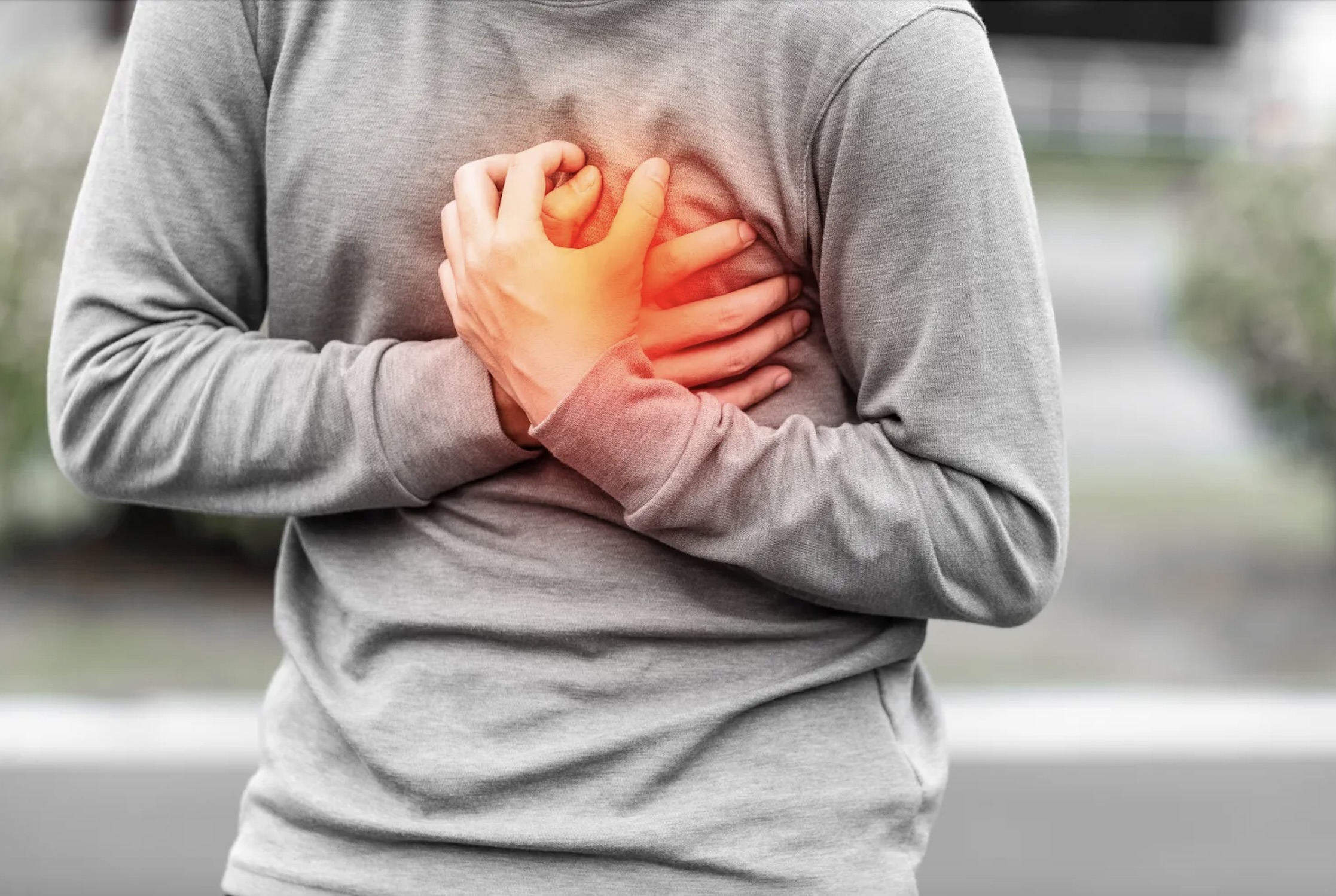What are the symptoms of a widowmaker heart attack?
A “widowmaker” heart attack refers to a severe heart attack that occurs due to a blockage in the left anterior descending (LAD) artery, which supplies a significant portion of the heart’s blood. Symptoms of a widowmaker heart attack can be intense and may include:
- Severe Chest Pain or Discomfort: Often described as a crushing, squeezing, or pressure-like pain in the chest. It may radiate to the left arm, neck, jaw, or back.
- Shortness of Breath: Difficulty breathing or a feeling of breathlessness, which may occur with or without chest pain.
- Nausea or Vomiting: Feeling nauseated or vomiting, which can accompany the chest pain.
- Sweating: Profuse sweating, often cold and clammy.
- Lightheadedness or Dizziness: Feeling faint, dizzy, or lightheaded, which can sometimes lead to loss of consciousness.
- Fatigue: Sudden and extreme tiredness, especially if it is unexplained or severe.
- Pain in Other Areas: Pain or discomfort in areas like the arms, back, neck, jaw, or stomach.
- Indigestion: Sometimes mistaken for severe indigestion or heartburn.
It’s crucial to seek immediate medical attention if experiencing these symptoms, as a widowmaker heart attack is a medical emergency that requires prompt intervention.
What are the causes of a widowmaker heart attack?
A widowmaker heart attack is caused by a severe blockage in the left anterior descending (LAD) artery of the heart, which is a critical vessel supplying a large part of the heart muscle. The primary causes and contributing factors include:
- Atherosclerosis: The most common cause, where fatty deposits (plaque) build up in the artery walls, narrowing and eventually blocking the artery. This plaque can rupture and cause a blood clot to form, leading to a blockage.
- Coronary Artery Disease (CAD): Often resulting from atherosclerosis, CAD is a condition where the coronary arteries are narrowed or blocked due to plaque buildup.
- Blood Clots: Formation of blood clots at the site of a ruptured plaque can obstruct the LAD artery.
- Spasm of the Coronary Artery: A temporary contraction or spasm of the coronary artery can reduce blood flow and lead to a heart attack, although this is less common as the sole cause of a widowmaker heart attack.
- Cholesterol Levels: High levels of LDL cholesterol (“bad” cholesterol) can contribute to plaque formation in the arteries.
- High Blood Pressure: Elevated blood pressure can damage the artery walls, making them more susceptible to plaque buildup.
- Diabetes: Diabetes increases the risk of atherosclerosis and plaque buildup in the coronary arteries.
- Smoking: Tobacco use contributes to the development of atherosclerosis and increases the risk of coronary artery disease.
- Genetics: Family history of heart disease can increase the risk of coronary artery disease and related heart attacks.
- Obesity: Excess body weight can contribute to risk factors like high blood pressure, high cholesterol, and diabetes.
Addressing these risk factors through lifestyle changes, medication, and medical interventions can help reduce the risk of a widowmaker heart attack.
What is the treatment for a widowmaker heart attack?
Treatment for a widowmaker heart attack, caused by a severe blockage in the left anterior descending (LAD) artery, involves several critical steps to restore blood flow to the heart and minimize damage:
- Immediate Medical Care: Prompt treatment in an emergency setting is crucial. This typically includes:
- Aspirin: Administered to help prevent further clotting and reduce heart damage.
- Thrombolytics: Medications such as tissue plasminogen activator (tPA) are used to dissolve the blood clot causing the blockage. These are usually given within a few hours of the onset of symptoms.
- Antiplatelet Drugs: Medications like clopidogrel may be used in addition to aspirin to further reduce clotting.
- Percutaneous Coronary Intervention (PCI): Often performed as soon as possible, PCI involves:
- Angioplasty: A balloon catheter is inserted into the blocked artery and inflated to open it up.
- Stenting: A small mesh tube (stent) is placed in the artery to keep it open and maintain proper blood flow.
- Coronary Artery Bypass Grafting (CABG): In severe cases, where PCI is not feasible or the blockage is extensive, CABG surgery may be performed. This involves creating a new route around the blocked artery using a graft from another part of the body.
- Medications: Long-term management typically includes:
- Beta-Blockers: To reduce heart workload and lower blood pressure.
- ACE Inhibitors: To help relax blood vessels and reduce heart strain.
- Statins: To lower cholesterol levels and stabilize plaque in the arteries.
- Anticoagulants: To prevent further clot formation.
- Lifestyle Changes: To prevent future heart attacks and improve overall heart health, the following changes are recommended:
- Diet: Adopting a heart-healthy diet low in saturated fats, cholesterol, and sodium.
- Exercise: Regular physical activity to improve cardiovascular health.
- Smoking Cessation: Quitting smoking to reduce cardiovascular risk.
- Stress Management: Techniques to manage stress, which can affect heart health.
- Monitoring and Follow-Up: Regular check-ups with a cardiologist to monitor heart health, adjust treatments, and manage risk factors.

Leave a Reply
You must be logged in to post a comment.